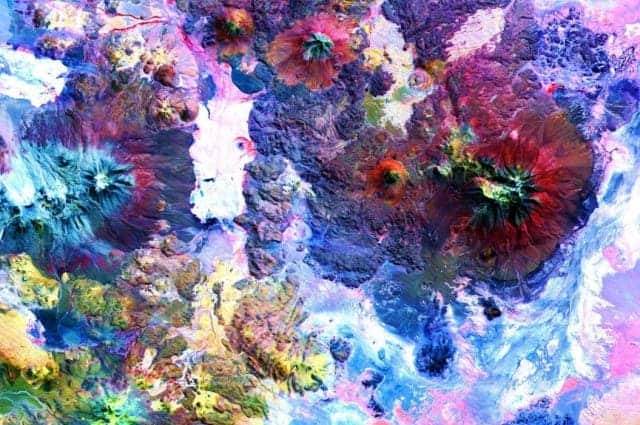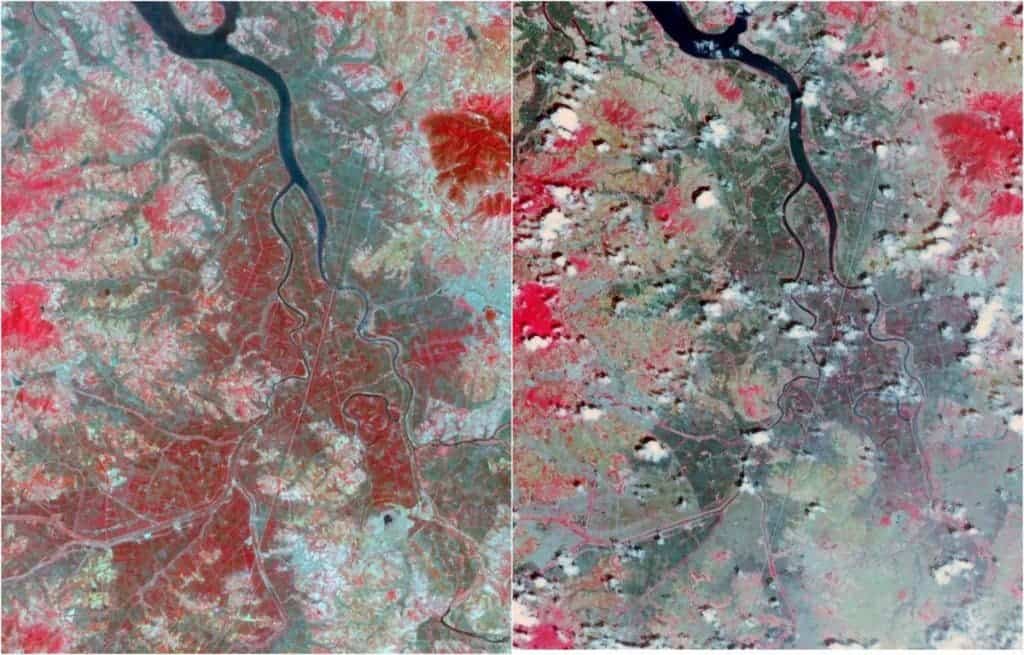
But it’s not just pretty pictures that NASA is releasing – this is useful data, which all of us can use for our own studies. Whether you’re a professional or an amateur, you can draw valuable information from these images. Example applications include monitoring glacial advances and retreats, monitoring potentially active volcanoes, identifying crop stress, determining cloud morphology and physical properties, evaluating wetlands, monitoring thermal pollution, monitoring coral reef degradation, mapping surface temperatures of soils and geology, and measuring surface heat balance.
“We anticipate a dramatic increase in the number of users of our data, with new and exciting results to come,” said Michael Abrams, ASTER science team leader at NASA’s Jet Propulsion Laboratory in Pasadena, California, home to ASTER’s U.S. science team. ASTER data are processed into products using algorithms developed at JPL and the National Institute of Advanced Industrial Science and Technology (AIST) in Japan. A joint U.S./Japan science team validates and calibrates the instrument and data products.
The 2.95 million individual scenes that have been released can be accessed through the Land Processes Distributed Active Archive Center with a smaller (and more easily accessible) selection on the ASTER website.




